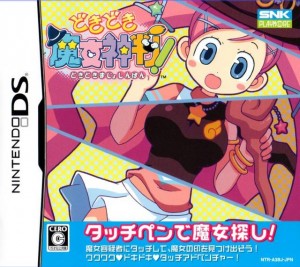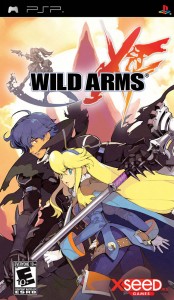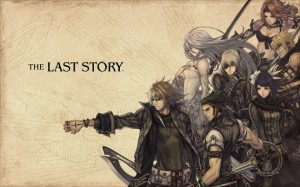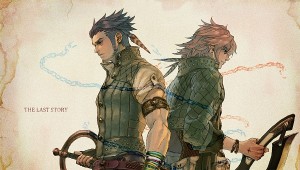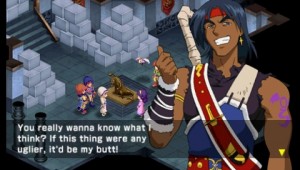 Finished at around 24 hours, about 5 hours too long for the content this game offered.
Finished at around 24 hours, about 5 hours too long for the content this game offered.
Things I liked
I liked quite a number of things about Lunar Silver Star Harmony. It’s too bad the few things I didn’t like made up the bulk of the game.
– NPC conversations. I love it that, first, NPCs have more than one line when you speak to them and second, they update their conversations depending on story events and who you have in your party. There are way too few games like that out there. If I was rating Lunar on that feature alone I’d give it 9/10.
– Bright, happy colors. They’re my “thing.”
– The occasional funny line. I thought the writers went overboard at some points, trying too hard to be catchy and clever when a scene would have worked better with simpler, plainer dialogue. Sometimes when everyone’s trying to be funny then no one’s funny. But they did get some laughs out of me, so it’s all good.
Why I’m just glad it’s over
– The combat. I explained why it was affecting my enjoyment in a previous post. Some games start out with a poor battle system that improves as you go along. This wasn’t one of them. However the EXP dropped per boss did increase significantly towards the end, and the last few bosses went down with no effort at all. Next time there needs to be better AI for auto-battling, fewer battles per screen and no respawning when you return.
– Alex and his unbrotherly affections towards Luna. And vice-versa. What’s wrong is wrong, I don’t care if they’re “not blood-related.” What does that even mean? Adoptive siblings are siblings just like any other, no matter what Japan says.
Still, I’m a generous soul. Given half a chance I could have pretended they were just childhood friends. Unfortunately I never got that chance, not with their very own parents constantly rubbing their relationship in my face:
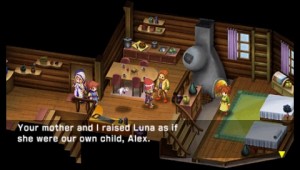 |
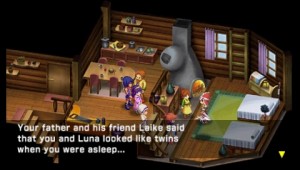 |
“There! There! You like that, don’t ya? Don’t ya?” No. Please. Just, no.
– I got tired of getting lost. There were some straightforward dungeons, but even more where I had to resort to a FAQ to figure out where I was supposed to go. I’m talking about you, final dungeon. And that place with all the holes. And that tower with all the switches and puzzles. And a couple of other places I’ve purged from my memory.
– Loading times. From screen to screen, from screen to battle and back again. Might have been my memory card, but it was pretty bad. And it was pretty noticeable because the music would cut out for a few seconds before resuming every time.
– Sub-bosses that keep menacing you and escaping because you’re too incompetent to stop them, even though when you finally fight them they’re weaker than a baby’s fart.
– The game’s tendency to beat one point to death before moving on to the next. Alex wants to be Dragon master (x100), Alex wants to save Luna (x200), mankind doesn’t need gods (x400). As a game Lunar doesn’t have much to say, but that’s never stopped anyone before.
– Being preached at like this:
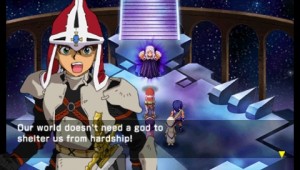 |
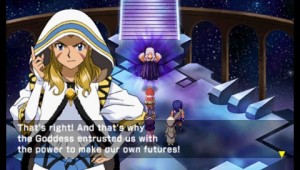 |
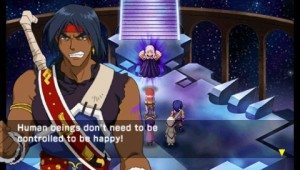 |
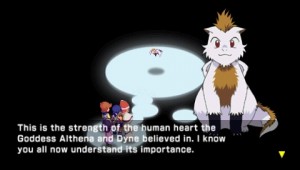 |
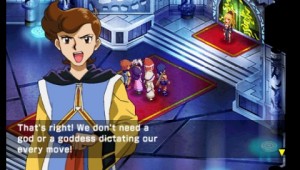 |
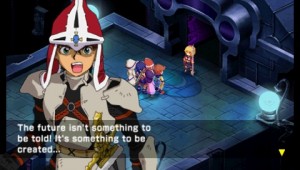 |
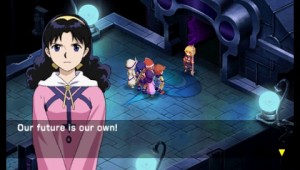 |
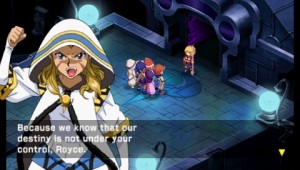 |
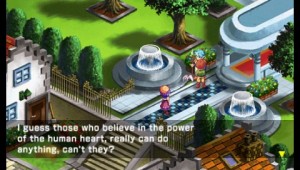 |
I have no problem with the concepts themselves, cliched though they are. What bugs me is the heavy-handed way they’re rammed down my throat. It should be possible to make the same points through the characters’ thoughts, actions and attitudes throughout the game. It’s more meaningful, more memorable and more convincing that way. It’s lazy writing to assume you don’t need to justify yourself because all readers will agree with the inherent merit of your ideas. What if I don’t agree that humans don’t need gods to be happy? It should be easy enough to prove that the rule of humans is preferable to the rule of gods, but nobody in Lunar attempts to do so. It’s more like “Well we don’t like it and we’re the good guys, so nyaah.” Their arguments never go beyond staring angrily at the screen and repeating the same lines with minor variations. I heard you the first time, what now?
This isn’t just exclusive to Lunar. Most jRPGs end with cheesy scenes like this, and it bugs me every time. Why must it always boil down to the party forcing their views and ideals on the rest of the world simply because they’ve bought enough equipment and leveled up enough to do so? They’re just like the bad guys.
I’m not saying Ghaleon was necessarily right and the party was wrong. I’m just bristling at the game’s assumptions that I’ll agree with whatever my party does because they’re my party. Alex and co. haven’t proved that they know nor care about the wishes of the world any more than Ghaleon does. They’re ignoring the will of the majority just as much as he is, except they haven’t even given the matter any thought at all. They know what they want (freedom, lonely little sisters in their neighborhood) and they have the means to get it, and that’s all it takes to make their cause right. Just once in my life I’d like to see the heroes take a poll of general opinion before claiming to speak for all mankind.
Well, all that is neither here nor there. For better or worse I’ve finished Lunar Silver Star Harmony. It had some good features and some funny lines, and at least it was short. Those few bright spots notwithstanding, it was a poor experience overall, and I think I’m done with the Lunar series after this.

